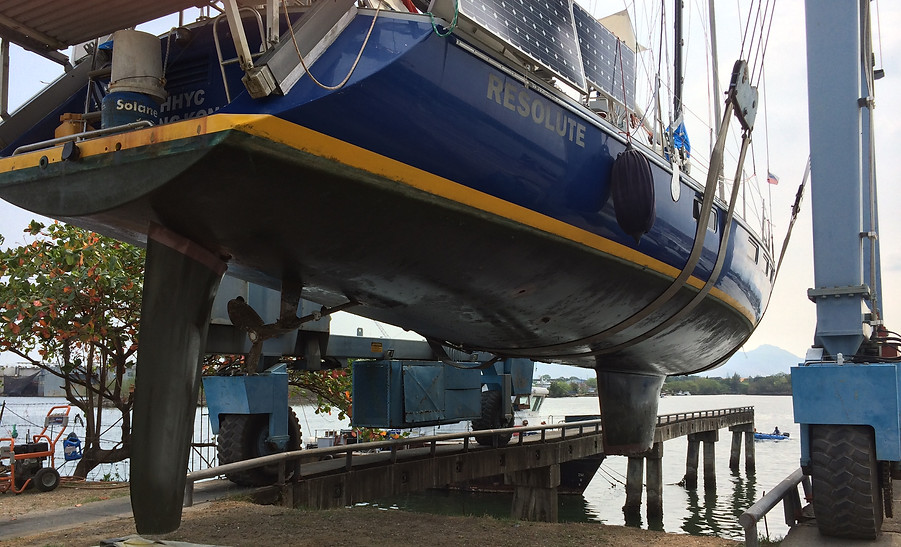
The construction of the vessel is American Bureau of Shipping approved. The hull and deck are made of biaxial and unidirectional rovings on an end-grain balsa core infused with vinyl ester resin using the SCRIMP vacuum bagging process. The deck joint is a horizontal lap construction sitting on a four-inch inboard flange bolted every four inches. Watertight bulkheads at the forward and aft end of the interior accommodation are also fibreglass over balsa core.
The rubbing strake is molded into the hull and capped with aluminium. The external keel is lead. There are four standpipes (one in the forepeak, one in the engine room, two serve as pilot house drains). Six thru-hull fittings - one in the engine room, and in the stateroom there are two for airconditioning, plus one for the depth log and one for speed logs, and one in the starboard aft stateroom for air-conditioning discharge - these are the only hull intrusions.
Water tanks, 275 gallons each, are amidships, just above the waterline along the hull sides and can act to provide improved stability when a full windward tank is used as movable ballast.
Fresh rainwater can be collected from the deck through valves fitted to deck drains and plumbed to freshwater tanks.
Diesel fuel is in two 175-gallon aluminium tanks mounted on the hull sides in the engine room. A transfer pump allows fuel to be moved to the windward tank.
The heavy house batteries, 8 x 6v Trojan traction batteries are under the main cabin sole in the keel stub. They act as part of the ballast package and contribute to vessel stability.
The hull was painted with Awlgrip Flag Blue in 2006. The hull was bottom coated in Coppercoat in 2010
